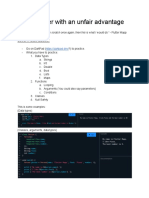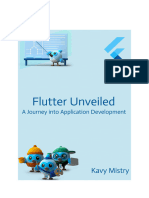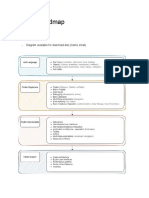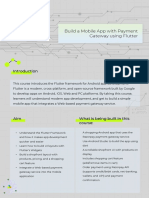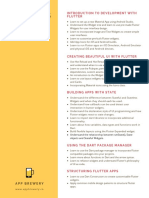Step-by-Step Guide to Learn Flutter
This document provides a structured step-by-step plan to learn Flutter, from setup to publishing
your first app. Follow each step in order, and practice with small projects to reinforce your learning.
1 Prep your toolbox: Install Git, pick an editor (VS Code or Android Studio).
2 Install Flutter using FVM (Flutter Version Manager) for clean version control.
3 Set up Android Studio SDK and Xcode (for iOS development).
4 Run 'flutter doctor' and fix any issues until all checks are green.
5 Create your first Flutter app with 'flutter create'. Run on emulator or Chrome.
6 Learn Dart basics: types, null-safety, async/await, collections.
7 Understand Widgets & Layout: StatelessWidget, StatefulWidget, Row, Column, Stack.
8 Manage state: start with setState, then Provider or Riverpod for app-wide state.
9 Learn navigation and routing with Navigator or GoRouter.
10 Work with APIs and JSON data using the http package.
11 Store data locally with SharedPreferences or Hive.
12 Adopt a feature-first folder structure for better scalability.
13 Handle forms, validation, and authentication flows.
14 Add animations: implicit (AnimatedContainer) and explicit (AnimationController).
15 Write tests: unit, widget, and integration tests.
16 Optimize performance, accessibility, and add internationalization (i18n).
17 Build and release: Android AAB for Play Store, IPA for App Store.
18 Advance with push notifications, file uploads, maps, geolocation, and CI/CD.
Mini-Projects for Practice:
1. To-Do App with Provider
2. Weather/News App with API integration
3. Auth Flow with forms & validation
4. Animations Showcase
5. Capstone App (e.g., delivery, ecommerce)
By consistently practicing each step, building projects, and exploring Flutter’s ecosystem, you’ll
become proficient in building cross-platform apps. The key is iteration: learn, build, test, and
improve.

























